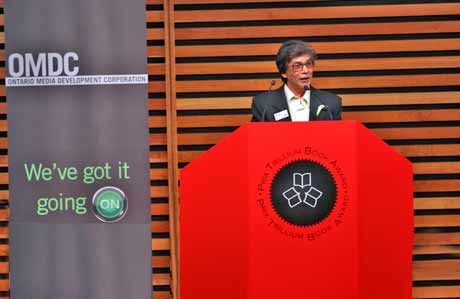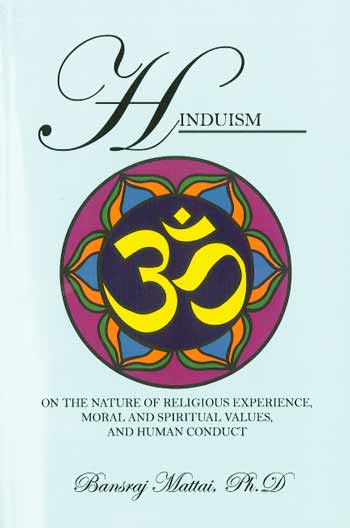Book Review

A review by Frank Birbalsingh
After a writing career that has so far produced three collections of stories and other books, Rabindranath Maharaj's fifth novel The Amazing Absorbing Boy has won the 24th Ontario Annual Trillium Book award. No doubt the award serves Maharaj as a sort of accolade, after eight books, of acceptance within the reigning hierarchy of contemporary Canadian fiction writers. From the beginning, with The Interlopers (1995) - a collection of stories - and Homer in Flight (1997) his first novel, Maharaj has staked persistent claims for such acceptance, based partly on his interpretation of immigrant experience nowadays in Canada, and partly on his skill as a master of comedy.
The main story in The Amazing Boy is told by Samuel (Sam) who is from Mayaro, a fishing village in Trinidad. Sam is seventeen when his mother dies in Mayaro and he is sent to Toronto to live with his absent "Nowhereian" father, described by his Uncle Boysie as: "one completely useless person who couldn't get along with anybody else." Neither parent is named although constant reminders of his father's reputation for non-existent inventions shed some light on the frustration-charged coarseness and bitterness of wit, barbed insult and witheringly scornful criticism he consistently levels at Sam who lives as a lodger in his (the father's) apartment. All Sam can do is to daily observe his father coming and going without any idea of where or if he works. It is Sam's first sign of the loneliness that comes from loss of familiar people, places, sights and sounds - one of the primary afflictions of an immigrant.
A clear thread connects events in Sam's story as he struggles to adjust to conditions of his Canadian environment. From time to time, for instance, in letters from Trinidad, his Uncle Boysie reminds Sam, who merely holds a visitor's visa, of his underlying aim to acquire status as a legal Canadian resident. Uncle Boysie who owns a general store in Trinidad, even sends money for studies at Centennial College in Toronto to help Sam improve his qualifications and prospects of legal residency. Meanwhile, Sam works as a gas station attendant at Petrocan and later at a video store. But his narrative of these events is by no means one-tracked, its smooth progression being periodically interrupted by accounts of encounters between Sam and his colleagues and friends, many of them fellow immigrants from distant lands. Whole chapters infiltrate sections of Sam's story describing either adventures of his fellow immigrants, or incidents about friends and family remembered from Trinidad; and in the end the result is a narrative that is leisurely and episodic, yet driven irresistibly forward by the account of progress in Sam's career as an immigrant in Canada.
All this is interesting enough, if perhaps expected in an immigrant novel. What first alerts us to originality in Maharaj's narrative are the daringly concocted names of characters such as Dr. Bharambose Atambee Tulip, Billy Bilkim Barbarossa, Canella, Dilara, Mr. Cherry Xalvat, Konrad Schmidlap and, apart from others, Sam's own new name after he begins working in the video store – Roti Ramirez. These names remind us of the novel's epigraph: "Gulp! It's too late." which is taken from: "A comic book somewhere." The names of Trinidadian characters, for example, Matapal, Moslai, Pantamoolie, and Loykie, also suggest that Sam is deeply influenced by the heroes of comic books he has read, and that he sees Canada, at least partly, in comic book terms that mix fantasy with reality.
As a novel The Amazing Boy's originality is to spell out the fantasy aspects of immigrant experience in Canada which may not be as explicitly visualised, in action, in previous immigrant novels. Even characters close to Sam – Sam's father and Auntie Umbrella – betray stripes of fantasy. The shadowy appearance and aggressively caustic remarks of Sam's father already mark him out as strange. If Sam's mother thinks of his father as "a no good daydreamer" Uncle Boysie regards him with more pointed sarcasm: "A dreamer with no dreams is just a madman." And Auntie Umbrella who suddenly arrives unannounced in Toronto is someone who is: "black like tar and had stumpy bandy legs that made her resemble one of those Dalek robots from Dr Who."
But, as we can see from deliciously wounding strictures of Auntie Umbrella aimed against her Trinidadian countrymen, the comic book or graphic novel ancestry of The Amazing Boy should not exclude the parallel presence of traditional Caribbean influences in the novel, notably of Samuel Selvon and V.S Naipaul, iconic figures in Caribbean literature. Selvon's The Lonely Londoners (1956) the foundation Caribbean immigrant novel, considers the experience of West Indian immigrants who flocked to London during a period of decolonisation in the 1950s, and Selvon's portrait of their sense of alienation and loneliness is archetypal for Caribbean authors such as Austin Clarke and Maharaj now using Canada as their scene.
The effect of V.S. Naipaul's humour, irony and wit appears in almost all of Maharaj's writing, especially in his early books. Similarities between B. Wordsworth a poet in Naipaul's Miguel Street and Sam's librarian friend in The Amazing Boy could not be greater. We remember B. Wordsworth for taking a whole month to write one line "The past is deep," while Sam's librarian began a poem in 1984 and, by 1997 had completed only two lines "The snow piffles" and "Like orphaned kittens". After twenty three years he still cannot complete the third line.
Maharaj's title character – the amazing absorbing boy – is based on Loykie a boy who suffers from a skin disease and lives with his family in a Mayaro swamp. But Sam is inspired by stories that he hears from Loykie, and although he is warned by Uncle Boysie against falling into a make-believe world, claims:"my world wasn't make-believe but was a patch of every amazing thing I had touched and absorbed, a dust here, and a dust there."

A review by Adit Kumar
Guyanese born Bansraj Mattai, Ph.D., Emeritus Professor of Philosophy, an accomplished Latin, Greek and Sanskrit scholar, in Hinduism focuses on the logical, ethical and metaphysical foundations of Hindu Dharma. His abiding concern in writing this book, as he contends, is with the pursuit of truth, the conception of which, in the Gandhian sense, as divine in origin and purpose, and in the Platonic sense, as having a coincidence with beauty and goodness. These, he argues, speaks directly to the basic premise of Hinduism. He claims that the strength of his emphasis on this consideration as well as the discursive, analytical and comparative approach he brings to the subject matter draws a sharp distinction between his, and any other recent book on Hinduism.
The author's stated aim is to present Hinduism in all its impartial nakedness, unencumbered by the partisanship, prejudice, or emotion, and drawing on its ultimate source in the philosophy of the Vedas and Upanishads, the latter of which, in the words of Professor Alfred N. Whitehead, constitute "the most impressive metaphysics the human mind has conceived."
Hinduism, the religion of most of the people who live in the subcontinent of India and of many others in the Indian Diaspora through whom the religion has spread to many parts of the West, including Guyana, Trinidad and Tobago, Surinam, and other parts of North and South America, adheres to profoundly ethical and philosophical principles, not sufficiently emphasized, in the author's view, in many other books on the subject. This work squarely addresses the deficiency within the framework of genuine religious and moral experiences, the author, Dr. Bansraj Mattai, claims.
Dr. Mattai, while not underplaying the importance and significance of rituals and cultural practices in Hindu life (indeed, he devotes an entire chapter to "Symbolism and Worship in the Hindu Religious Tradition"), challenges the reader to look behind these rituals and practices to the deep thinking that informs them. He analyses crucial concepts such as Dharma, Artha, Kama and Moksha (for which, unfortunately, are to be found no one-word translations in the English Language) and reaches into territories of human reflection to remind readers of the high moral principles of truth, goodness, justice, and peace, to which Hindu teachings have always been beholden. Like the seers and sages of the Vedas and Upanishads, the Ramayana and the Bhagavad Gita, the author asks his readers to recognize in Hinduism a powerful force for good in the human condition and thereby proclaims that its teachings are not for the ears and understanding of Hindus alone but of all mankind, especially in the troubled times in which we live.
The author invites his readers to engage in a measure of introspection which, he hopes, would reveal that they are, indeed, "born in the image of God", and, should accordingly, be guided by this overarching principle in all we think, say, and do. A running theme throughout the work is 'practice what we preach' in the tradition of great minds of the likes of Mahatma Gandhi, Shri Aurobindo Ghose, and Maharishi Dayananda Saraswati.
There is something in this book for everyone, Hindu and non-Hindu alike, who is interested in a serious assessment of the subject, says its author who lives in California.
The book is available worldwide through Amazon.com, Barnes and Noble.com, Flipkart (India).com, and other booksellers. In Toronto, contact Janet Naidu at 905-780-8866 or naidu88669@rogers.com.
Questions or comments about the book may be directed to the author at email: babam67@gmail.com or telephone 626-796-3601.